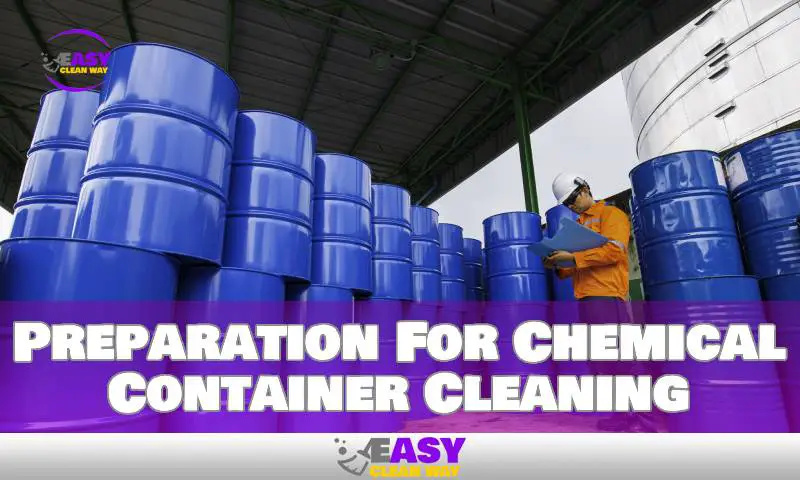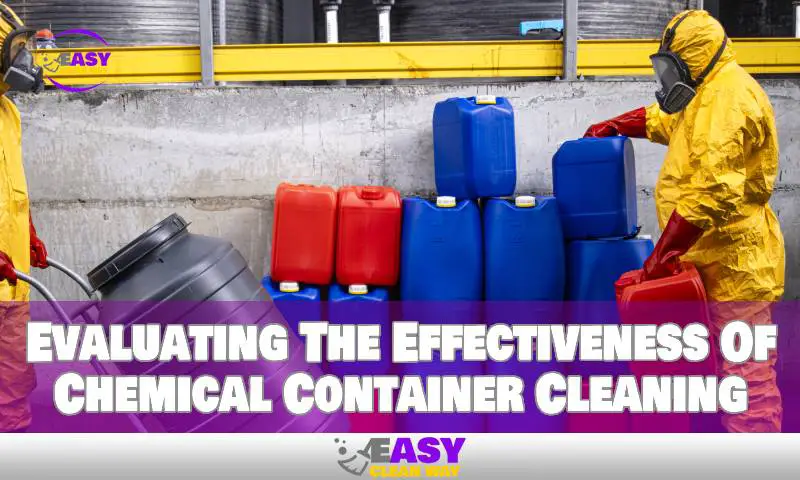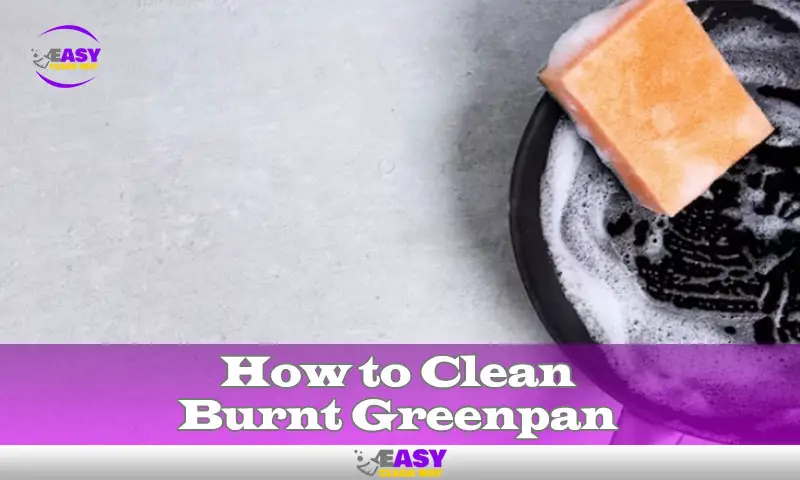
To clean chemical containers, wear protective gear and use the appropriate cleaning solution. First, rinse the container with water to remove any leftover chemicals.
Then apply the cleaning solution and scrub the container thoroughly before rinsing it again with water. Chemical containers are an essential component of any laboratory or industrial setting. However, when the containers are no longer in use, they need to be thoroughly cleaned before being reused or disposed of.
Cleaning chemical containers can be a daunting task, but it is necessary to avoid any hazardous situations. In this article, we will discuss the proper steps to clean chemical containers. Adhering to these guidelines will ensure that the containers are free of any remaining chemicals and can be safely reused or discarded. Let’s explore the steps in detail.
Understanding The Types Of Chemical Containers
Chemicals are an essential part of various industries. They are used as raw materials, reagents, solvents, and even fuels. Chemical containers are essential to store, transport, and handle these chemicals. They come in different shapes, sizes, and materials, depending on the chemical’s properties, purity, and application.
Understanding the types of chemical containers is vital for safe and efficient chemical handling.
Overview Of Different Types Of Chemical Containers
Chemical containers can be broadly classified into three categories – bulk containers, intermediate containers, and small containers.
- Bulk containers are typically large tanks or drums with a capacity of more than 200 liters. They are used for storing or transporting large quantities of chemicals between manufacturing or processing units. Examples include ISO tanks, road tankers, and rail tank cars.
- Intermediate containers are smaller than bulk containers, with a capacity of 10-200 liters. They are used for in-process storage, blending, or decanting of chemicals. Examples include intermediate bulk containers (IBC), jerrycans, and carboys.
- Small containers are the smallest in size, with a capacity of less than 10 liters. They are used for storing, handling, or dispensing small quantities of chemicals. Examples include bottles, cans, and aerosol sprays.
Importance Of Understanding Material Compatibility
Different chemicals can react with each other, resulting in fire, explosion, or toxic gas formation. Therefore, it is vital to ensure that the chemical container’s material is compatible with the chemical being stored or transported.
- Mixing incompatible materials can cause corrosion, degradation, or permeation of the container, leading to leaks or contamination of the product.
- Material compatibility is also crucial for the safe handling of the container. Some chemicals can weaken or react with the container, making it brittle, opaque, or slippery, which can increase the risk of spills or accidents.
Common Materials Used In Chemical Container Production
Chemical containers can be made of various materials, including metals, plastics, glass, or ceramics. The choice of material depends on several factors, including chemical compatibility, physical and mechanical properties, cost, and regulatory requirements.
- Metals, such as steel and aluminum, are strong, durable, and resistant to impact and temperature extremes. They are commonly used for bulk containers and intermediate bulk containers.
- Plastics, such as polyethylene, polypropylene, and PVC, are lightweight, flexible, and resistant to chemical attack. They are commonly used for small containers and intermediate bulk containers.
- Glass is transparent, inert, and impermeable to gases and liquids. It is commonly used for small containers, such as vials and ampoules, for storing or transporting high-purity chemicals or pharmaceuticals.
- Ceramics, such as porcelain and stoneware, are hard, dense, and resistant to chemical attack. They are commonly used for storing or mixing acidic or corrosive solutions.
Choosing the right type of chemical container is crucial for safe and efficient chemical handling. The type of container should be based on the chemical’s properties, purity, and application. Material compatibility and common materials used in chemical container production should also be considered to avoid any hazardous accidents or spills.
Preparation For Chemical Container Cleaning

Essential Safety Equipment And Materials
Before you start cleaning chemical containers, it is important to have the proper safety equipment and materials to minimize hazards. Here are some essential items you should have:
- Safety glasses or goggles to protect your eyes from any splashing chemicals
- Chemical-resistant gloves to protect your hands from exposure to chemicals
- Respirator or mask for breathing protection
- Appropriate cleaning solution for the type of chemical present in the container
- Hot water for cleaning
- Scrub brush or scouring pad for removing stubborn residues
Proper Handling And Disposal Of Chemicals
Handling and disposing of chemicals require standard protocols to prevent physical harm or major environmental damage. Below are some standard operating procedures for the proper handling and disposal of chemicals:
- Wear safety equipment such as gloves and goggles before handling chemicals
- Sort chemicals according to their hazard class (flammable, corrosive, toxic)
- Use chemical spill kits if there is any spill or leakage
- Dispose of used or contaminated chemicals properly according to local regulations
- Rinse the container thoroughly with water before disposal or recycling
Pre-Cleaning Inspection And Evaluation Of Containers
Before beginning the cleaning process, it is essential to inspect and evaluate the containers to determine the level of contamination and the appropriate cleaning method. Here are some tips:
- Inspect the container for any physical damages, such as punctures or holes
- Check for any visible residue or sediment in the container
- Identify the type of chemical residue in the container and use the appropriate cleaning solution
- Evaluate if the container requires recycling or disposal based on local regulations
By following these guidelines and using the proper safety equipment and materials, you can safely and effectively clean chemical containers. Remember to always dispose of chemicals responsibly and to take the necessary precautions to avoid accidents or hazards during the cleaning process.
The Cleaning Process
Step-By-Step Instructions For Safely Cleaning Containers
Cleaning chemical containers requires careful handling to prevent any harm to the cleaner or the environment. Here is a step-by-step process for safely cleaning containers:
- Wear personal protection equipment (PPE) such as gloves, a face mask, and goggles to protect yourself from chemical splashes during the cleaning process.
- Pour any remaining liquid from the container into a disposal unit designed for hazardous chemicals.
- Add detergent or cleaning solution to the container and fill it with hot water. Close the lid tightly and shake it for a few minutes to allow the cleaning solution and hot water mixture to clean the inside of the container.
- Rinse the container with clean water, making sure to remove any leftover cleaning solution or detergent.
- Inspect the container for any remaining dirt or residue. If there is still some residue, repeat the process until the container is clean.
- Once the container is clean, let it dry completely before storing it.
Tips For Handling Different Types Of Chemical Residues
Different chemicals require different cleaning methods. The following tips will help you handle various types of chemical residue:
- Solvent-based chemicals require a different cleaning process than water-based ones. Use solvent-based cleaning solutions for these chemicals.
- For organic or inorganic chemicals that produce fumes, it is better to use a vacuum to remove any residue and fumes.
- Highly corrosive chemicals need to be cleaned thoroughly with warm water or a specified cleaning agent, depending on their type.
- Avoid mixing any chemicals, as this may cause dangerous reactions.
- Always check the chemical data sheet for the specific cleaning procedures and products recommended for handling the chemical.
Importance Of Rinsing And Drying Containers Thoroughly
Thorough rinsing and drying are crucial for chemical containers, as they ensure that they are ready for reuse or disposal. Here are a few reasons why rinsing and drying are essential:
- Rinsing ensures there is no leftover residue that can cause contamination, corrosion, or other harmful reactions.
- Drying prevents the growth of bacteria, which can occur when any moisture is left inside the container.
- Moisture left inside the container can also cause rusting, which can lead to structural damage.
- Before storing or disposing of the container, ensure that it is completely dry on the inside and outside to avoid any accidents.
The cleaning process of chemical containers requires careful handling and adherence to safety measures to prevent any harm. With the above tips and instructions, you can safely handle and clean different types of chemicals.
Evaluating The Effectiveness Of Chemical Container Cleaning

Tools And Methods For Evaluating Cleanliness And Chemical Residue Levels
Evaluating the effectiveness of chemical container cleaning is a critical aspect of ensuring workers’ safety and reducing environmental pollution. Here are some tools and methods for evaluating cleanliness and chemical residue levels:
- Visual inspection: Visually inspecting the containers for any residue, stains, or discoloration can help identify unclean areas and ensure that the cleaning procedure is thorough.
- Black light inspection: Blacklight, or UV light, inspections not only detect any remaining residue but also reveal potential leaks or holes in the containers.
- Water break test: Conducting a water break test helps determine if the containers are clean and allows the detection of any surface-active agents that may have been left on the containers.
Importance Of Routine Cleaning And Inspection Procedures
Routine cleaning and inspection of chemical containers ensure that the containers are free of harmful residues and safe for further use. Here are some key points that highlight the importance of routine cleaning and inspection procedures:
- Prevents contamination: Thorough cleaning and inspection procedures prevent cross-contamination of chemicals when filling the containers and avoid unwanted reactions that may result from residue buildup.
- Workplace safety: Chemical residues can harm your workers, cause fires or explosions, and impact equipment performance. Regular cleaning ensures a safe work environment.
- Maintaining regulatory compliance: Certain agencies require a documented system of cleaning, maintenance, and inspection records to certify that the containers comply with environmental standards.
Procedures For Disposing Of Cleaning Materials Safely
After cleaning, it is important to dispose of the cleaning material safely to minimize the environmental impact. Here are some key points regarding the disposal procedures:
- Consult with the local environmental or waste management agency for the proper procedures to follow.
- Use a labeled and properly marked container to store the waste before disposing of it in compliance with your location’s regulations.
- For large-scale cleaning, consider consulting with a waste management service to handle the process.
Following these tips for evaluating the effectiveness of chemical container cleaning ensures workplace safety and protects the environment, helping to maintain regulatory compliance.
FAQs
How Do I Clean A Chemical Container Safely?
Wear safety equipment, empty the container, rinse, and dispose of the rinse water properly.
Can I Reuse A Chemical Container After Cleaning?
It is generally not recommended to reuse a chemical container to avoid contamination and safety risks.
What Should I Do With An Empty Chemical Container?
Empty chemical containers should be rinsed well, and the rinse water should be disposed of properly.
What Happens If I Don’t Clean A Chemical Container Properly?
Chemical residue can build up and contaminate future contents, leading to safety risks and inefficiency.
Conclusion
Properly cleaning chemical containers is crucial not only for prolonging their life but also for ensuring safety at the workplace. Keeping the containers free of dangerous chemicals and residues is a key step in protecting the environment. By following the guidelines mentioned in this article, you can keep your chemical containers clean and safe.
Remember to wear protective gear and always follow the manufacturer’s instructions to avoid any hazardous accidents. Furthermore, practice the recommended cleaning techniques and use the right detergent and sanitizer for your particular chemical container. By taking these simple steps, you are not only ensuring a cleaner and safer work environment but also increasing the longevity of your containers and keeping your workplace compliant with environmental regulations.
Hey there! I’m Alton Smith, your Clean Expert blogger. I’m on a quest to help you conquer chaos and embrace the joys of a tidy life.




